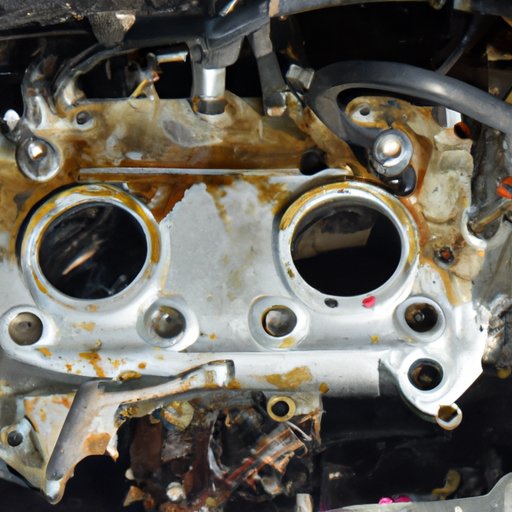
I. Introduction
A carburetor is an essential part of an engine that mixes air and fuel in the right proportions for combustion. Over time, carburetors can become clogged with dirt, debris, and other contaminants, leading to poor engine performance and decreased fuel efficiency. This article will walk you through the process of cleaning a carburetor to ensure that your engine runs smoothly and efficiently.
II. Step-by-Step Guide
You will need a few tools and materials to clean a carburetor, including a screwdriver, carburetor cleaner, a small brush, a rag, and safety goggles. Follow these steps to clean your carburetor:
- Remove the carburetor from the engine using a screwdriver.
- Disassemble the carburetor by removing the float, needle, and jet.
- Soak the carburetor parts in carburetor cleaner for at least an hour.
- Use a small brush to clean any remaining debris from the parts.
- Rinse the parts with water and dry with a rag.
- Reassemble the carburetor and reattach it to the engine.
Be sure to wear safety goggles to protect your eyes from carburetor cleaner and debris, and follow all safety precautions outlined on the cleaner.
III. Video Tutorial
Watching a video tutorial is a great way to follow the carburetor cleaning process step-by-step and ensure that you are doing it correctly. Check out this video tutorial for some helpful tips and tricks:
https://www.youtube.com/watch?v=-ONfS9YV8lY
IV. Common Mistakes
Some common mistakes people make when cleaning carburetors include:
- Skipping important steps, such as disassembling the carburetor
- Using the wrong cleaner or not following instructions on the cleaner
- Not cleaning parts thoroughly or using a brush that is too harsh and can cause damage
- Not reassembling the carburetor correctly
These mistakes can lead to further engine damage or poor performance. To avoid them, be sure to follow the step-by-step guide carefully and use the correct tools and materials.
V. Types of Carburetors
There are several different types of carburetors, including downdraft, sidedraft, and updraft models. Each type has a unique design and function, and requires a slightly different cleaning process. Before cleaning your carburetor, identify which type it is and follow the appropriate cleaning process for that type.
VI. Benefits of a Clean Carburetor
Cleaning your carburetor regularly can have many benefits, including:
- Improved engine performance and horsepower
- Better fuel efficiency and lower emissions
- Longer engine lifespan
For example, a dirty carburetor can cause engine misfires, rough idling, and poor acceleration. By cleaning the carburetor, you can improve these issues and also save money on gas in the long run.
VII. FAQs
Here are some frequently asked questions about cleaning carburetors:
- How often should I clean my carburetor?
- Can I clean my carburetor without removing it?
- What is the best cleaner to use for a carburetor?
- Can I use a wire brush to clean my carburetor?
- Is it safe to use carburetor cleaner?
You should clean your carburetor every six months to a year, or more often if you notice decreased engine performance.
No, it is important to remove the carburetor to ensure a thorough cleaning.
There are several types of carburetor cleaners available. Choose a cleaner that is compatible with your engine and follow the manufacturer’s instructions.
No, a wire brush can cause damage to the carburetor. Use a small brush with soft bristles instead.
Carburetor cleaner can be dangerous if inhaled or ingested. Be sure to wear safety goggles and follow all safety precautions on the cleaner.
VIII. Conclusion
By following the step-by-step guide and tips outlined in this article, you can clean your carburetor like a pro and reap the benefits of optimal engine performance and longevity. Regular carburetor cleaning is an important part of engine maintenance, so be sure to make it a part of your routine.




